Frozen food players are trying to dispel the category’s ‘cheap, low-quality’ image by highlighting the benefits the freezer offers to product taste, quality and even food waste. So who are the key figures taking the fight to fresh?
How do you rile a room full of frozen food industry leaders? You could, like Iceland’s frozen food trading director Andrew Staniland, announce that the sector stands for “cheap, low-quality junk food” in the minds of consumers.
Yet his assertion resonated, rather than riled, at this month’s British Frozen Food Federation (BFFF) business conference. Iceland has been at the forefront of efforts to change these perceptions. And having joined from a fresh background, Staniland is a massive convert to frozen food. “There are endless benefits,” he stresses. “There are more benefits than fresh - it’s just a matter of perception.”
On this front, Staniland is frustrated. For him, there is still a widespread misunderstanding of frozen food that is hampering its sales potential. Although there has been a return to growth over the past few years - prompting talk of a frozen food revival - the sector could be in healthier shape.
Take-home retail sales of frozen food dipped 0.4% last year, equating to a drop of £25.7m [Kantar 52 w/e 26 January 2020]. Although there has reportedly been a recent uplift from the coronavirus, the category doesn’t want to rely on disasters for growth.
To deliver a real change, the industry is clear it needs to go even further in communicating its benefits. As BFFF CEO Richard Harrow puts it: “We need to start talking about frozen food.” But how exactly can the industry’s great and good get that message through? And can that communication deliver a long-standing frozen food revival?
The Kantar figures show what an uphill struggle it is. After all, it’s not just Iceland that has been banging the frozen food drum. Birds Eye, for example, teamed up with Sainsbury’s to highlight the frozen aisles in its stores in September, as part of its £6m ‘Eat In Full Colour’ campaign.
There have also been high-profile celebrity endorsements. Take Gino D’Acampo, who launched a frozen range in Iceland at the tail-end of last year. “I never understand the perception people have that frozen food is cheap food - I make great Italian dishes at home and freeze them for later,” he said.
But the flat sales are not necessarily a sign that these efforts are falling flat. While Kantar’s business unit director James Spicer admits frozen food has had a “tough year, relatively speaking”, he says this was influenced by external factors. Most notably, the comparatively poor summer of 2019 made year-on-year growth hard to come by. “Lapping last year was a challenge especially for categories like ice cream,” he told the BFFF conference.
“Another underlying factor was the decrease in promotions and the amount of spend going through promotions.” Indeed, Kantar data shows a 5.7% drop of spend on promotion over the past year. So all things considered, Spicer believes the sector “is still in really good shape”.
“We need to steal our growth from the larger, more ‘credible’ fresh food market and neutralise our sense of injustice”
Nomad MD Wayne Hudson takes a similarly positive view. For him, it’s important to recognise how far frozen food has come. When he became MD of Birds Eye four years ago, the sector was “definitely” seen as a junk food destination, he says. Since then he has witnessed a “huge amount of change” thanks to industry-wide PR campaigns (as well as Birds Eye’s own efforts under his leadership).
But it’s hardly job done. “We can always do better,” he says. “There is lots more that can be done and lots more that we will do.”
Indeed, there is plenty of headroom to grow further. Iceland’s Staniland points out that frozen food is just a fraction of the size of the chilled market, which weighs in at £75bn. Here is where he sees the real opportunity.
“How do we grow without stealing from ourselves? We need to steal it,” he told the conference. “We need to steal our growth from the larger, more ‘credible’ fresh food market and neutralise the sense of injustice many of us have.”
For that to happen, he suggests some pretty radical tactics. One is to rebrand frozen as the “fresher” aisles. He may not be entirely serious on that point, but he is serious about frozen using “aggressive PR stunts” to grab the attention of consumers.
“I always hark back to Edeka in Northern Germany, which wanted to show how much it relied on the international community,” Staniland says. “So it did a campaign with a shot showing the full assortment of shelves, and then did a shot of the shelves after removing everything that relied on something international. That had a big impact.
“Imagine if we had a shot of all the fresh shelves, and then removed everything containing frozen ingredients?” he asks. “Those stunts can bring our industry to life and capture the imagination of consumers.”
Staniland’s second suggestion is to highlight the ‘fridgeable’ potential of frozen food - ie its ability to be chilled. It may sound pretty counterintuitive for a sector that uses its long-life credentials as a key selling point. But Staniland points out that freezer sizes are falling in the UK (albeit enjoying an uptick due to coronavirus). “Samsung says fridge space is growing but freezer space is declining by 11%,” he says. “Growth is potentially bottlenecked.” Signalling that frozen foods can go in the fridge could unleash some “untapped potential”, he says.
£6.3bn: Value of the frozen food market in take-home retail sales [Kantar]
£2.4bn: Frozen sales in the foodservice sector in 2019 [Peter Backman]
48: Number of times a year the average shopper buys into the frozen food category [Kantar]
192m: Number of take-home frozen food occasions in the average week [Kantar]
Plus, Staniland points out that chilled foods typically carry ‘freezable’ logos. So why can’t it work the other way? “All of a sudden you would have access to that £75bn chilled market,” he argues.
Kantar’s Spicer also spots potential in this area. Of course, there would be work to do around use by dates and instructions. “I think it would have to be communicated very carefully and very well to consumers,” he acknowledges. “But there’s no reason why it can’t work.”
Simon Wainwright, director of global product at IGD, is similarly open to the idea - with the caveat that it must fulfil a consumer need. “The way to identify the opportunity is to go back to the data and see how shoppers are shopping categories,” he argues.
Wainwright points out that most consumers are “sleep shopping” their way around the supermarket. So this kind of disruptive tactic may be just what it takes. “Seventy-five per cent of what’s in your basket is what you always buy and there’s not a lot of room for experimentation. The challenge for frozen is to wake up shoppers,” he says. “So this kind of provocative messaging is an interesting thought, but you’re only going to speak to a shopper if it meets a genuine need of theirs.”
Still, not all messaging needs to be this radical or disruptive. There is one area already on the consumer agenda that could present a huge opportunity: food waste. The long life of frozen products means they are naturally well placed to tackle the household waste that occurs due to products going off.
As awareness of food waste grows, BFFF CEO Harrow sees real potential for frozen to get involved in the conversation. “We’ve got a great story to tell around helping consumers and professionals reduce food waste,” he says. “I think we [the BFFF] should have a policy and a statement around that.”
Indeed, Harrow says he is keen to work more closely with Wrap to hammer home frozen’s role. “Perhaps we could plagiarise the slogan: ‘Love food, hate waste, buy frozen?’”
For him, that would be a positive move away from the traditional messaging around frozen as a value option. Indeed, this is the very opposite of cheap junk food. “We need to talk to consumers about how we can help them reduce waste,” he argues. “When we shift the conversation away from saving money and towards saving the planet, I think the messaging becomes much stronger.”
Wrap seems open to greater collaboration. Director Peter Maddox used the BFFF conference to voice his enthusiasm for working with the frozen industry. “There are certainly aspects of frozen that have powerful evidence behind them - for example, encouraging portion control and preventing food waste that occurs because it isn’t used in time,” he said. “So there’s evidence that frozen could be powerful in addressing food waste. Let’s get out there and get the messaging right.”
£228: Average annual household spend on frozen food [Kantar]
14%: Of all at-home meal occasions in the UK contain at least one frozen food product [Kantar]
42%: Of all at-home evening meal occasions in the UK contain at least one frozen food product [Kantar]
Emotive approach
For Wrap, that message will be based very much on evidence. The frozen industry has the ability to take a more emotive approach. So says Iceland’s Staniland, who believes food waste should form the basis of some further disruptive PR. “Why don’t we lobby the government to say that fresh food is environmentally irresponsible?” he asks. “We make frozen pizza in Italy, it locks in freshness and flavour, it’s cheaper, and there’s no waste in that supply chain, so why don’t we lobby the government, media and quangos around the UK with that message?”
Whatever direction the industry takes, there are certainly plenty of ideas on the table. Which explains why the leaders of frozen food remain overwhelmingly positive, despite the flat sales figures of the past year.
“Why don’t we lobby the government to say that fresh food is environmentally irresponsible?”
The industry heavyweights are now preparing to turn this talk into action. Nomad’s Hudson, for example, says he has big plans to raise the profile of frozen. While his first few years at Nomad were largely focused on reviving Birds Eye, he is now ready to take a more category-wide approach.
Food waste will form a major part of that activity. “We’re doing a piece of research with Sheffield University on that subject,” he reveals. There will also be activity in the retailers’ frozen aisles to push that message.
Meanwhile, many of the other big names are keen to challenge consumer perceptions through the sheer power of their own product pipelines.
When asked about their plans to boost the reputation of frozen food, almost all of the names on this year’s power list cite innovation. Strong Roots CEO Samuel Dennigan says taste-led NPD is “at the heart of what we are trying to achieve”. By bringing out premium, plant-based products, he says the brand is “challenging the perception of frozen among consumers and ourselves”.
Similarly, McCain’s regional president, GB & Ireland, Howard Snape, says it is crucial to “stay innovative and produce products that tap into the latest trends”. Meanwhile, Young’s Seafood MD of frozen Yvonne Adam says NPD such as its healthier Chip Shop Lighter range is helping to boost the category by “reaching new audiences”.
Crucially, all of these innovations are about as far away from “cheap, low-quality junk food” as you can get. So here’s to a power list that has the power to change the image of frozen food for good.
Tim Murray
Director, Newton

The key challenge - and opportunity - for the frozen food category is evolving to meet changing consumer demands. Frozen food has always ticked the box for consumers looking for convenience. However, shoppers would traditionally think of items such as pizza, chips and ice cream, which miss the mark for the growing number of health-conscious consumers.
But that is changing rapidly. For example, busy millennials with young children are a core growth area within frozen. Not only do they appreciate the convenience of frozen food, but they are also drawn to the reduced food and packaging waste. Coupled with the innovation we are seeing in frozen, it’s perhaps no surprise that the category is appealing to a wider consumer base. This is showing in the numbers, with frozen vegetables and potatoes growing at 2% year on year and frozen vegetable protein at an impressive 8.5%.
The top three people in the power list are all harnessing these trends. Wayne Hudson and his team at Birds Eye ran their biggest frozen vegetable marketing drive ever last year. Iceland, under the leadership of Nigel Broadhurst, has launched 550 new or improved lines, boosted by appetite for trends such as street food, restaurant meals or takeaways. Strong Roots is a newer name on the frozen block, but with Samuel Dennigan’s passion for supplying the nation with healthy frozen vegetables, it’s unsurprising its products are already stocked in all the major UK multiples.
These examples prove that a combination of innovation, customer insight and thoughtful initiatives can fuel growth - even in tough market conditions.
Power list: the 10 key figures in frozen food
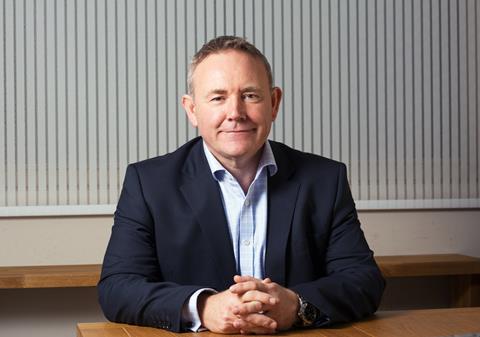
1. Wayne Hudson
MD, Nomad Foods, UK, Ireland and Nordics
There’s no arguing with Wayne Hudson’s place at the top of this list. As MD of Nomad Foods, he’s been entrusted to help consolidate the frozen market, and presides over some of the biggest names in frozen food: Birds Eye, Goodfella’s and Aunt Bessie’s.
Hudson has a long history in frozen food. His first taste of the freezer came in 1997, when he joined United Biscuits to work across its chilled and frozen portfolios. But he only took on his latest role last September, following his brilliant turnaround as MD of Birds Eye. It’s a brand that, in his words, had “lost its way”. Investment in marketing helped to hammer home “what made the brand famous in the first place” – supported by the new-look, suave Captain Birdseye – but Hudson worked the brand over from the bottom up, tackling range, proposition, price points and workplace culture.
The figures say it all. After years of slow decline, Birds Eye has enjoyed its third consecutive year of growth. In 2019, sales grew 1.1% to just shy of £500m across the portfolio [Nielsen 52 w/e 31 December 2019]. Hudson is clear success is a team effort. “I am proud to be part of the transformation of Birds Eye but I can’t stress enough the pride I feel for what the collective team has delivered,” he says. “It’s been nothing short of phenomenal.”
But it’s not all about Birds Eye now. Under Nomad’s ownership, Hudson is integrating Aunt Bessie’s and Goodfella’s. On this front, he is similarly full of praise for the team. “They’ve done an outstanding job integrating those businesses,” he says.
The combination of these new businesses and “phenomenal” core growth helped Nomad turn over around £700m last year, according to Hudson.
Looking ahead, the Nomad boss is keen to raise the profile of frozen food in general. “We’re now in a position where we can focus more on elevating the category at a total level,” he says. Although he won’t reveal details, Hudson has shown, through retailer partnerships such as the Birds Eye in-store takeover with Sainsbury’s, how Nomad might seek to own the entire frozen aisle.
And you wouldn’t bet against further acquisitions.
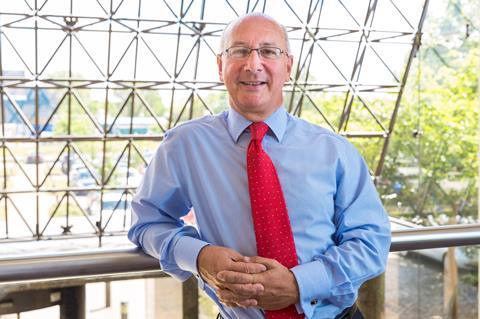
2. Nigel Broadhurst
Joint MD, Iceland and president, British Frozen Food Federation
No one has done more to influence the frozen sector in the UK than Iceland. And no one has championed frozen food within Iceland more than Nigel Broadhurst.
The joint MD has worked almost exclusively at the frozen food specialist since starting as a buyer in 1983. And though he had a seven-year stint away from the business – at Hibernia Foods, Kwik Save and Somerfield from 1998 to 2005 – Malcolm Walker asked him to come back the minute he returned to Iceland.
With good reason, says BFFF CEO Richard Harrow. Broadhurst has been an “instrumental” figure in shaping the industry, in its numerous phases, while challenging his team and his suppliers to up their game. “Nigel has incredible focus and the ability to be highly creative and innovative, as demonstrated by the many market-leading initiatives he’s spearheaded,” he says.
While he’s most closely associated with Iceland’s overarching Power of Frozen campaign, the initiatives Broadhurst is most proud of “launching were the first own-label ranges of prepared frozen food in the market” alongside “innovating and driving frozen food into new and exciting areas”.
On the latter front, Iceland has been particularly active. Take the Mexicana Street Co and Mumbai Street Co ranges, inspired by the street food trend. Or the No Bull burger, which coincided with the craze for ‘bleeding’ meatless burgers. What better way to demonstrate the power of frozen?
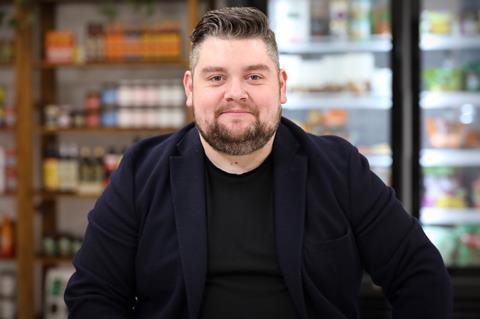
3. Samuel Dennigan
Group CEO, Strong Roots
Granted, Strong Roots is nowhere near the largest brand on this list. Its sales were on track to top £41m last year, which is still just a fraction of what McCain pulls in. But it’s the sheer level of innovation and ambition behind the plant-based brand that makes CEO Samuel Dennigan worthy of third place in this ranking.
Four years ago, he founded Strong Roots with the aim to create a genuinely premium frozen range. The rest, as they say, is history.
After picking up a listing in Harrods – the first frozen food brand outside of ice cream to do so, and one of Dennigan’s proudest moments – Strong Roots quickly built up a mainstream following. It has doubled revenue for four years on the trot, and Dennigan expects that rate of growth to continue “for at least another three years”, by which time he reckons its turnover will be a cool £246m.
Part of that growth will come from overseas. In September, Strong Roots secured a £14.2m cash injection from New York private equity firm Goode Partners to fund its expansion in the US.
“We’re really proud of our part in making frozen cool again,” says Dennigan. And he doesn’t intend to stop there. “We are constantly challenging the perception among consumers and ourselves,” he adds. “We can achieve that by redesigning what frozen means to the consumer, and transitioning it into a functional category rather than simply one of convenience.”

4. Howard Snape
Regional president – GB & Ireland, McCain Foods
Few people know frozen quite like Howard Snape. During his 27 years at McCain, he has climbed the ranks from sales manager to regional president, and was instrumental in the turnaround of its Foodservice brand and proposition – so much so that, as chief commercial officer, he was tasked with replicating his successful business model globally across the retail, quick service restaurant and innovation functions.
Snape describes his latest role, which he took on in September 2018, as one of his proudest achievements to date. “This was a great personal achievement for me. It’s such an exciting time to be leading the business,” he says. Exciting, indeed. Because the pace of change in frozen food has arguably never been faster. And McCain is leading the charge, evolving its core frozen potato business to meet new consumer needs: last January, it launched Lighter Home Chips to cater for the healthier crowd, and it is set to launch gluten-free and vegan Naked Oven Chips later this year to tick the free-from and plant-based boxes.
It’s paying off. Sales across its portfolio grew 5.5% to £341.9m last year [Nielsen]. All informed by “our cross-channel insights, which allow us to see what consumers are enjoying in foodservice, retail and at home”, says Snape.
And the frozen food giant is venturing outside its core battleground, most notably with the August launch of its frozen snack line Brew City – designed to be paired with craft beer – into retail and out of home. It also became the primary backer of plant-based ‘chicken’ nugget startup Nuggs in July.
Of course, it hasn’t all been good news. McCain hit the headlines for the wrong reasons in November as it cut 230 jobs. But Snape points to its “recent £100m-plus investment in our Scarborough site” as an indication of its confidence in the future. “That will boost our capabilities and give us the latest technologies to continue to produce high-quality frozen food,” he says. Watch this space.

5. Duncan Cross
Senior category director for meal solutions and frozen, Asda
If you’re a frozen brand, Duncan Cross is the person to know. He’s in charge of frozen buying decisions at Asda, which is only just behind Iceland in its value share of the frozen market [Kantar].
During his 23-year stint at Asda, Cross has worked across babycare, fresh and impulse grocery. He took on his most recent role, which encompasses meal solutions and frozen food, 15 months ago.
Cross quickly made his mark with work to lower prices and simplify Asda’s frozen offering last summer. That involved the potentially risky move of removing popular “duplicate” products such as Asda Steak Cut Chips and investing in price across other lines. But it paid off. “The results have been fantastic with Asda core chips in significant volume growth,” says Cross.
Innovation has been another key focus for Cross, who points to on-trend NPD such as Asda’s plant-based range.
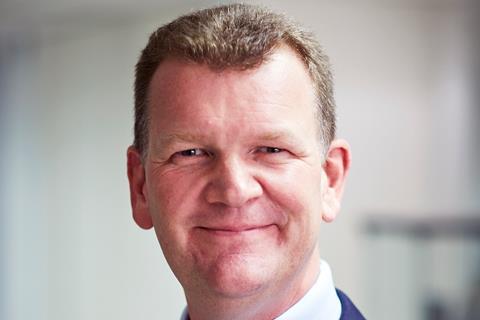
6. Hugo Mahoney
CEO, Brakes
It’s fitting that the UK’s biggest foodservice wholesaler features in this list. Because CEO Hugo Mahoney is a passionate believer in the quality and potential of frozen food. Considering Brakes delivers 5.5 million items every week, he’s a powerful advocate.
Mahoney points to the Chefs’ Choice Awards – six of the 10 wins from Brakes were frozen products – as evidence of its “great NPD” in this area. He is adamant that frozen should no longer be the “poor cousin to fresh” in the minds of consumers. “There is now real innovation in frozen categories, and our range and choice will enhance any operator’s menu,” he says.
Indeed, its winner in the Chefs’ Choice bread category – La Boulangerie Fully Baked Beetroot & Chia Tortillas – certainly couldn’t be accused of being boring.
Crucially, Mahoney says this focus on frozen is driven by customer demand. “The frozen revival is a trend from our customers requiring a high-quality product, frozen for freshness and delivered in perfect portion sizes,” he says.

7. Yvonne Adam
MD (frozen), Young’s Seafood
It’s been just four months since Yvonne Adam became MD of frozen at Young’s Seafood. But Adam has a wealth of experience in the sector, with marketing roles at Young’s, Baxters, Jeyes and Premier Foods under her belt.
Marketing will also fall under her remit as MD of frozen and is keen to highlight the “new multimillion-pound Masters of Fish campaign”, which aims to reach new audiences.
But this role is about much more than marketing. She leads the commercial operations for branded and own label, across retail, foodservice and international. One of her early projects has been to push innovations such as its Chip Shop Lighter range to “appeal to a more health-conscious shopper” and its Gastro sub-brand, which is now worth £64m and “the number one premium seafood brand”. The aim is to grow that figure to £100m.
If anyone has the prowess to make that happen, it’s Adam.
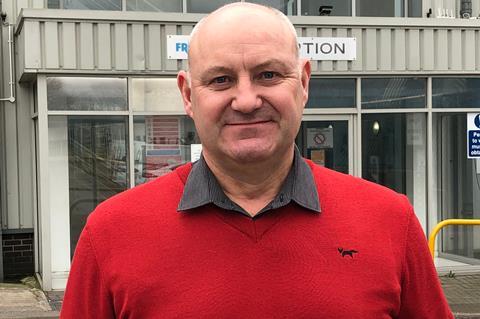
8. Mike Fraine
Country head UK & Ireland, Froneri
Described by one buyer as ‘Mr Ice Cream’, “you would think Mike Fraine was at the beginning of his career at Froneri – such is his passion and commitment to the category and to his customers”.
Of course, it wasn’t called Froneri when Fraine joined back in 1990. It was R&R up until 2016, when it entered into a JV with Nestlé. For Fraine, helping to bring about that move was “without doubt” his proudest achievement.
Fraine has been instrumental in Froneri’s growth and intaking on Unilever by introducing brands such as Cadbury, Extreme cones, Nuji and Daim. Crucially he has also ensured own label clients feel valued by delivering some great NPD. “This is quite an amazing feat, to balance growing the branded business against Unilever whilst simultaneously supporting own label,” says another appreciative buying director.

9. Rebecca Stanton-Hall
Head of buying, marketing & merchandising, Heron Foods and B&M Frozen
With B&M acquiring Heron in 2017, it was an opportunity to introduce food to its stores. Leading the charge is Rebecca-Stanton Hall, who started off as head of frozen in December 2017, and was promoted to her current role last February.
Her task was a mammoth one. When Stanton-Hall started back in 2017, there was no frozen food section in any B&M. So it’s unsurprising that her proudest achievement has been setting up the aisles from “absolute scratch”, launching sections across more than 90 B&M stores over a four-month period. She also helped develop more than 200 own-label lines.
Stanton-Hall is now focusing on innovation and keeping an eye out for “the next new and exciting product”. Given her wide-ranging experience in buying and category management – she has done stints at the Co-op, Nestlé and Iceland – she’s well placed to rise to the challenge.
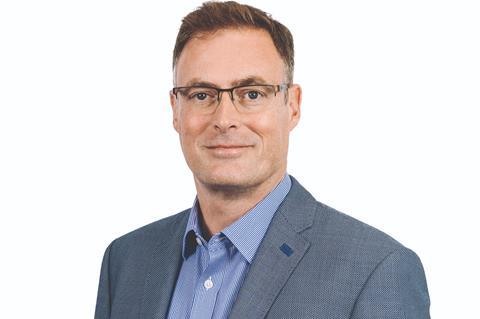
10. Simon Staddon
MD, Finsbury Food Group
Frozen plays a key role in bread, across retail and foodservice. No one knows this better than Finsbury Food Group MD Simon Staddon, who took the helm back in September 2016.
Staddon has drawn on his extensive experience in fmcg – he has worked in pizza, yoghurts and protein – to bring on-trend innovations to the bread world.
Staddon points to the launch of a vegan brioche burger bun under its Kara brand as a good example. “It was a quick response to rapidly changing customer demand, and helped our customers offer premium vegan burgers on their menus,” he says.
What’s next? Staddon plans “a pipeline full of diverse bakery products”. BFFF’s Harrow believes the MD’s “demonstrable track record of growing businesses and returns” will enable him to do just that




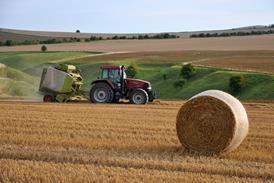








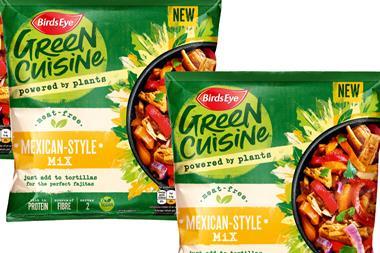
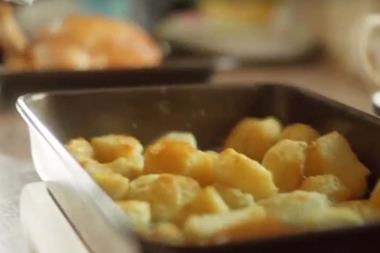
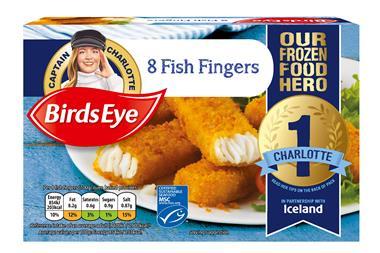
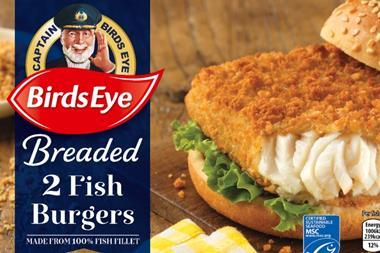

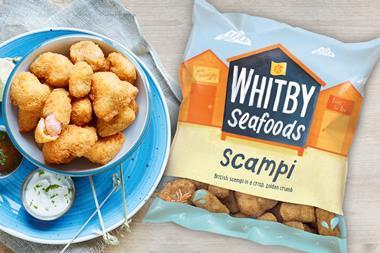






No comments yet